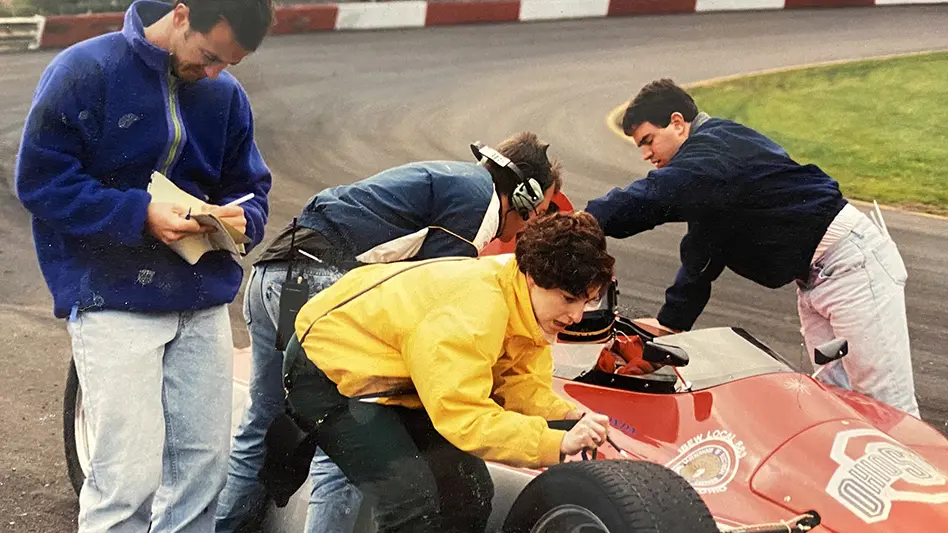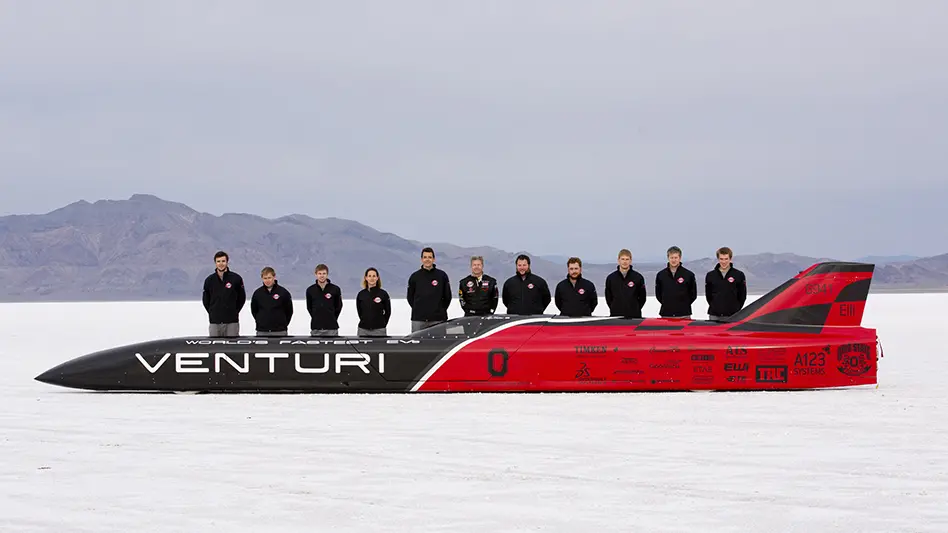Innovating for more than a century — beep beep, yeah!
Ohio State pushes the boundaries of how we drive and prepares the next generation of auto pioneers to go even further.
Ohio State’s involvement in automotive innovation dates back to the early 1900s, when the late Professor of Psychology Albert P. Weiss used a driving simulator to study drivers’ behavior. In the 1960s and ’70s, the late Robert Fenton ’57, ’60 MS, ’65 PhD, a pioneering electrical and computer engineering professor and researcher, was using unfinished stretches of Interstates 70 and 270 to test cars his team adapted to operate without drivers. Today, research and education initiatives are focused on advancing the safety and efficiency of vehicles and preparing the next generation of mobility innovators.

Professor of Psychology Albert P. Weiss oversaw research using a driving simulator, shown in use in 1927. Weiss was a national figure in driver behavior. (University Archives)
Student motorsports teams
Ohio State students are leaders in driving mobility innovation. The six-time national champion Ohio State EcoCAR team competes against university teams across North America in a four-year challenge aimed at incorporating advanced propulsion systems, electrification, and connected and automated vehicle technologies into a standard Chevrolet Blazer. Team members earn experience and skills they can’t find in books and oftentimes job offers through industry connections they make during the competition. In addition to the EcoCAR team, Ohio State students compete on five other student projects teams (Formula Buckeyes, Baja Buckeyes, Buckeye AutoDrive, Underwater Robotics and Buckeye Current), all with the ultimate goal of advancing mobility innovation.
Smart Mobility
In 2020, Ohio State launched its Smart Mobility initiative to lead and integrate mobility-related research, innovation and education across the university. Ohio State engineers are leading the charge in advancing mobility initiatives, designing highly efficient propulsion systems and advancing autonomous vehicle research. Smart Mobility aims to improve sustainability by developing lightweight materials and electric battery systems and addressing key barriers to electric vehicle charging. Faculty, staff and students also are making transportation more accessible, such as through work that provides prenatal trips to expectant moms and a transit navigation app for individuals with cognitive disabilities.
Honda-Ohio State Partnership
From scholarships to job placements, Honda and The Ohio State University have maintained a strong relationship for more than 20 years. As of 2020, the automaker’s investment in Ohio State students and faculty exceeds $28 million in research funding, including 235 projects over the last five years, creating a pipeline of talent to fill cooperative, intern, full- and part-time positions within the organization. Honda also was instrumental in the development of focused Ohio State facilities such as the Center for Design and Manufacturing Excellence, the Simulation, Innovation and Modeling Center, and the Driving Simulation Laboratory.
Lima Engineering Education and Manufacturing Center
A new training center providing learning and laboratory experiences for students in Ohio State’s Bachelor of Science in Engineering Technology program is set to open this fall. The Ohio State Lima Engineering Education and Manufacturing Center, which occupies a 40,000-square-foot facility at the Ford Lima Engine Plant Training Center, will provide students with hands-on experiences involving metrology, materials, machining, assembly, robotics, industrial controls and computer-assisted design. Through the Ford-Ohio State partnership, a new generation of engineers will graduate ready for manufacturing engineering jobs, advancing economic development in the region.
ARPA-E NEXTCAR
Earlier this year, Ohio State received a second round of funding from the U.S. Department of Energy’s Advanced Research Projects Agency-Energy (ARPA-E) to optimize fuel economy in connected and automated vehicles. This marked the first time a university was awarded consecutive $5 million programs. With the initial award, Ohio State demonstrated what can be accomplished related to connectivity and autonomy using current technology. Based on their success, Buckeye engineers were awarded funding for a follow-up project, with the challenge of considering future technologies related to level-4 automated functions.






